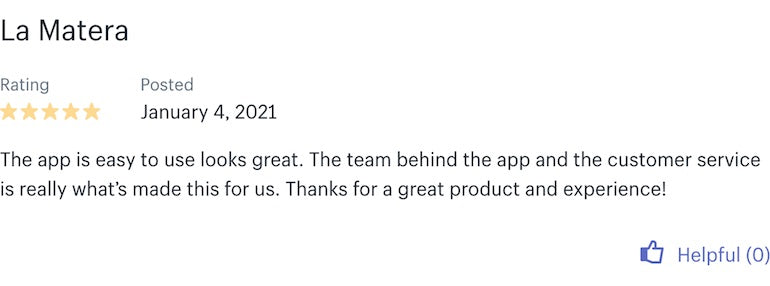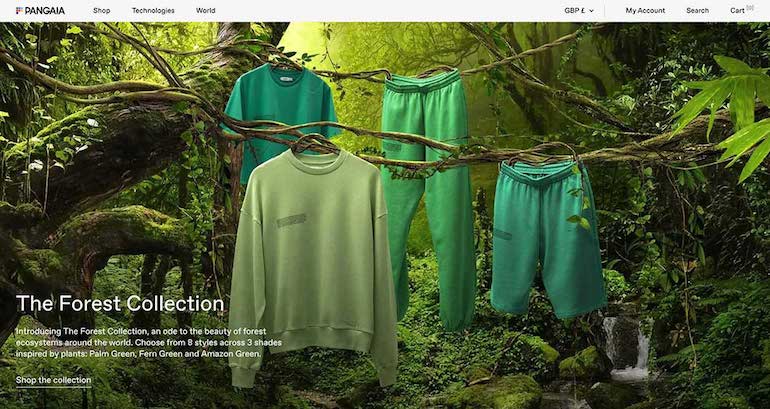At the height of the COVID-19 pandemic in 2020, the ecommerce industry as a whole saw the equivalent of 10 years' worth of growth in one short quarter. That level of growth brings opportunities right across the Shopify ecosystem, whether you're a merchant, partner, or developer.
Nowhere are these opportunities more prevalent than in the Shopify App Store, with over a million active merchants serviced by only a few thousand applications.
Shopify surpassed 5,000 apps in the App Store in 2020, but the growth has only just begun. Here are some #commerce trends I expect we’ll see more of in @Shopify's app ecosystem in 2021. 👇
— Fatima Yusuf (@fatimayusf) January 4, 2021
In this article, I'll be exploring why that growth has just begun, and look at some of the app development trends, opportunities, and factors that developers should be paying attention to in 2021.
Build apps for Shopify merchants
Whether you want to build apps for the Shopify App Store, offer custom app development services, or are looking for ways to grow your user base, the Shopify Partner Program will set you up for success. Join for free and access educational resources, developer preview environments, and recurring revenue share opportunities.
Sign up1. A+ customer support will be expected

App developers are always looking for ways to differentiate themselves from the crowd. Apps that have gone out of their way to offer exceptional customer support have historically been repaid with lower churn, word of mouth marketing, and positive reviews on the Shopify App Store.
"Apps that have gone out of their way to offer exceptional customer support have historically been repaid with lower churn, word of mouth marketing, and positive reviews on the Shopify App Store."
In 2021, great customer support will be table stakes for apps that want to succeed. Some of the things you can do to level up your customer support are to:
- Obsess over your onboarding process—ask folks who've never used your app to get it up and running and take notes while watching their screen to find your biggest friction points
- Invest in a customer support platform like Intercom or Zendesk, and spend the time and effort required to contextually integrate it into your application interface where it makes the most sense for your users
- Provide detailed video walkthroughs of common use cases or tasks, showing your customers how to get the most out of your app
2. Speed will continue to be important
We've known for years that speed leads to more conversions, but performance hasn't always been the number one focus for merchants. That's definitely changing, and with Shopify's new online store speed report, page weight and responsiveness is more front and center than ever in the minds of merchants (and their customers).
While we as app developers might think that performance and site slowdowns are issues for front end developers to handle, in 2021, we'll have to invest more into this.
Some good areas to focus on are:
- Removing reliance on third-party libraries like jQuery (or at least, attempting to use an existing version of jQuery if already present in the theme), reducing the number of front end assets your application loads, and ensuring those you do use are optimised with bundling and minification
- Ensuring your application only loads on the pages it’s needed on and doesn't block the render of the main page content when needed
- Leveraging Shopify's CDN for any static assets your application needs to take advantage of their edge network (and lighten the load on your app)
- Setting a target server response time of 100 ms for any API calls that may be made to your application from a customer interaction
You might also like: How to Do an In-Depth Liquid Render Analysis with Shopify Theme Inspector.
3. Automation will be everywhere
In a world of razor-thin margins, merchants are always looking for ways to do more with less, and get the most out of their most precious resource—time. Increasingly, store owners are using automation tools to eliminate repetitive manual tasks and customize apps to align with their business logic without having to employ a developer to write custom code.
"In a world of razor-thin margins, merchants are always looking for ways to do more with less, and get the most out of their most precious resource—time."
Merchants can use third-party Shopify-specific apps like Arigato, Mechanic, or Alloy to drive this automation, and Shopify Plus merchants have access to the purpose-built Shopify Flow tool.

Beyond that, however, I'm seeing a trend of Shopify applications developing their own internal automation offerings tailored to their specific domain. For example, email apps like Klaviyo and SmartrMail offer advanced customer workflow builders within their dashboards.
To take advantage of this trend, consider:
- Exposing some simple HTTP webhook input/outputs from your application to allow merchants to easily plug them into third-party automation tools like Zapier or IFTTT
- Building a Shopify Flow connector to instantly add value for your Shopify Plus merchants
- Building a workflow automation tool specific to your app's domain
Grow Volume 3: Building a Profitable Web Design Business
Get your free copy of Grow Volume 3: Building a Profitable Web Design Business sent to your inbox.
By entering your email - we’ll also send you marketing emails related to Shopify. You can unsubscribe anytime. Note: the guide won't be delivered to role-based emails, like info@, developer@, etc.
4. Knowing how to handle global traffic will be essential

Having over a million merchants on the Shopify platform is a great opportunity, but it can also mean that you're only one Black Friday / Cyber Monday App Store featured banner away from having hundreds of merchants installing your app and having to service their millions of end customers. Being able to cope with these (exciting but nerve-wracking) events will be more and more common as the ecosystem grows.
While in the early stages, app developers should be focused more on shipping features for merchants than spinning up Kubernetes clusters, but there are definitely some design and architecture choices that can be made early on to make scaling up later much easier:
- Utilizing "serverless" technologies such as AWS Lambda, Google Cloud Functions, or Azure Functions to automatically scale as your app receives more requests
- Setting up effective resource, load, and application monitoring tools (with alerts) on your chosen infrastructure from day one to ensure you understand your consumption, peak loads, and performance bottlenecks
- Designing your application to offload requests to Shopify where possible (for example, using the Theme API to store customer-facing assets and data on the Shopify CDN rather than requiring an application request)
You might also like: How to Market an App: 11 Expert Tips.
5. Deep admin integration will pay dividends
There's always been a split in the Shopify app ecosystem between "embedded" apps (ones that appear to merchants inside the Shopify admin) and "standalone" apps (ones that don't). Historically, there have been advantages and disadvantages of both, but in 2021 I expect to see the pendulum continue to swing towards apps with a deep integration with the Shopify admin.
Why? Well, the embedded app experience is getting better and better for both developers and merchants. The Polaris design system (which is used for the Shopify admin itself) not only saves developers the effort of designing and implementing a wide variety of components and user experiences, but it also ensures that merchants have a consistent and intuitive way to navigate an app.
Beyond that, in late 2020 we got a glimpse of Argo, Shopify's new framework for allowing applications to build deep integrations across all parts of the Shopify admin, not just the application's dedicated page.

The advantages for developers and merchants of having a consistent experience when building and managing a storefront suggest that deeper integration will become more prevalent in 2021.
6. GraphQL adoption will rise
Love it or hate it (and I'll be honest, I've had my moments), expect to see more and more GraphQL while building Shopify apps this year. Shopify has gone all-in: there's now nearly 100 percent GraphQL coverage of the "legacy" REST API, and plenty of newer APIs (Bulk operations, Subscriptions) that are only supported through GraphQL.
Given there's now some things you can only do with GraphQL, and that language support and tooling for the technology is improving, becoming proficient with the technology will be an advantage for Shopify developers in 2021.
You might also like: Getting Started with GraphQL.
7. Headless app architecture will continue to be important

"Headless" would have to win the ecommerce buzzword award for 2020 (assuming "unprecedented" is out of the running), and early signs point to 2021 continuing that trend.
While it isn't the right choice for everyone, we're definitely seeing an increase in interest from larger merchants (with the resources to support it) wanting the additional control and customization that comes with headless.
As an app developer, you can design your application to be headless-friendly by not relying on Liquid snippets and Shopify theme customizations, and providing a customer-facing API that gives front end developers the flexibility to integrate your functionality how they want. A good example of this is Smile.js, a Javascript API that provides customer reward information to a front end implementation.
8. Consider specializing in 2021
With the number of merchants on Shopify exceeding one million, many subsets of those merchants are now big enough to support their own sub-markets. Going forward, app developers will be able to build apps that target specific groups of merchants on Shopify, whether by vertical (fashion, beauty, food) or geography (US, Northern Europe, APAC), and still have a customer base big enough to build a substantial business.
Giving an application a particular focus makes it much easier to identify and market to your ideal customer, to deliver value to them once they've found your app, and vastly reduces the number of competitors in your space.
Some examples of this:
- A CSV Export app targeting the Japanese market
- DA digital download app focused on audio downloads
- A marketplace integration targeting French wholesalers
9. Look for opportunities with POS

After 2020 kept folks out of retail stores and pushed many retailers into expanding their online presence, there may be a surge in retail store shopping, once everything is safe with regards to COVID-19 restrictions and the vaccine. This could include a return to the trend of online-first brands moving into physical stores.
If this happens, I expect we'll see increased uptake of Shopify's POS offering, making its way into the stores of retailers that moved to Shopify in the pandemic and expanding across those merchants already using it.
Despite the potential growth in this area, app development for POS terminals has been pretty minimal to date, perhaps due to the limited number of integration points. With the release of Shopify POS Pro and the new Shopify POS App, this looks to be changing pretty rapidly. If you're an app developer with a good idea for an in-store app integration, 2021 could be the best year to give it a swing.
10. The venture capitalists are here
In case you were wondering whether it's possible to build a "web scale" SaaS business in the Shopify ecosystem, the venture capitalists certainly seem to think so. In the last six months, we've seen:
- Headless commerce tool Nacelle raise a $18M Series A
- Page builder Shogun raise a $35M Series B
- Email platform Klaviyo raise a $200M Series C
- Ecommerce holding company WeCommerce list on the Toronto Venture Exchange.
"In case you were wondering whether it's possible to build a 'web scale' SaaS business in the Shopify ecosystem, the venture capitalists certainly seem to think so."
These businesses all have Shopify as a key part of their ongoing strategy. As investors look for more opportunities in the rapidly growing ecommerce space this year, you can expect to see existing Shopify apps continue raising to grow and compete, and the introduction of new well-funded entrants to the market.
If you're a developer with an app showing some traction and a desire to grow quickly, 2021 could be the year to investigate funding.
Focus on these app development trends
2021 will be a big year for ecommerce, and consequently a big year for Shopify app developers. As the pandemic-driven spike in ecommerce consolidates, we'll have more merchants, more markets, more money, and more opportunity than ever before to build a business on the Shopify App Store. By keeping these app development trends in mind, you’ll set yourself up for success.
Hopefully you're as excited as I am!
What app trends do you think will be important in 2021? Let us know in the comments below.


